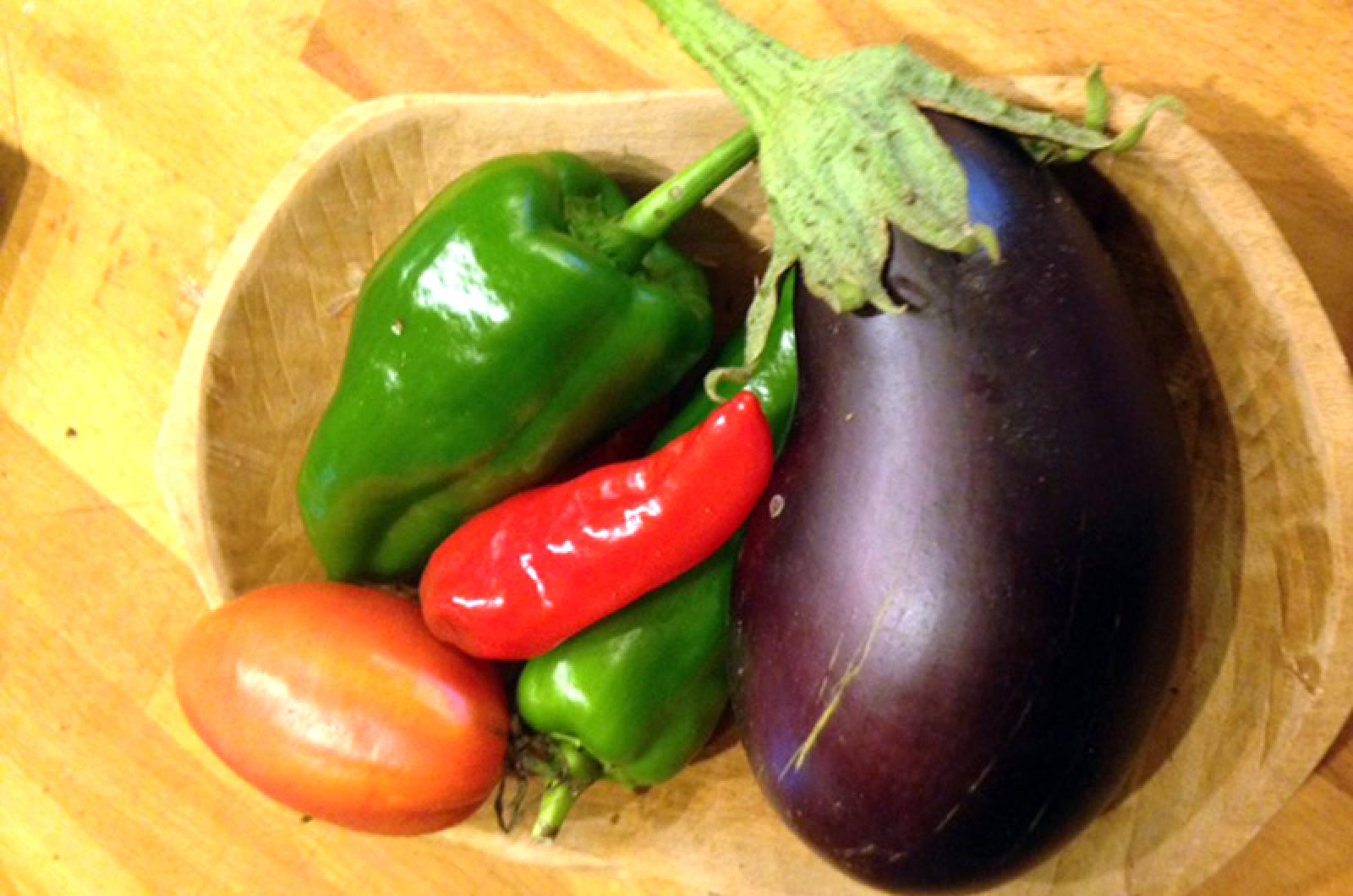It’s said that there are two types of people in the world: those who like eggplant and those who don’t. I am among the former. Actually, I don’t just like eggplant; I love it.
If you are among the latter group, you might think us eggplant lovers are crazy, and perhaps you would be right. In 13th century Italy, it was believed that eating eggplant could cause insanity. Egyptians took it a step further, suggesting that insanity became more common and more violent when eggplant was in season. The word for eggplant in Italian is melanzana, which translates to ‘crazy apple,’ and the species name, melongena, means ‘mad apple.’ The apple part refers to the thorn or bitter apple, the wild species from which eggplant was domesticated.
Eggplant has an almost endless variety of aliases — more than 30 Sanskrit names occur in Indian literature alone. They are called aubergine in France and England, brinjal in Asia and Africa, terong in Indonesia, and baigan in Trinidad and Tobago. In fact, according to Hobson-Jobson: A Glossary of Colloquial Anglo-Indian Words and Phrases, and of Kindred Terms, Etymological, Historical, Geographical and Discursive, there is probably “no word of the kind which has undergone such extraordinary variety of modifications, whilst retaining the same meaning.”
Americans are late to the game in terms of eggplant consumption. This remarkable plant’s botanically correct classification is fruit, and it was cultivated in Asia and by Arabs during the Middle Ages. Eggplants were unrecorded in England until the 16th century, and it wasn’t until the 18th century when Thomas Jefferson brought them to this country.
Its consumption still never took off, at least in the west. The U.S. ranks 20th in worldwide in eggplant production. China and India lead the way in growing this versatile vegetable, and now more than four million acres of land on the planet are under eggplant cultivation.
On those acres and throughout history, more than 70 varieties have been grown. In the U.S., we can generally find just seven cultivars. The most common, black magic, is valued because it has three times the antioxidant properties than the others. Antioxidants are just the beginning of the health benefits gained from eating eggplants. Studies suggest that lower cholesterol and blood pressure are also possible with its consumption.
On the flip side comes the news that eggplants have a shady connection. Like other nightshades, they contain nicotine. Not to worry, though, since 20 to 40 pounds are needed to consume the amount of nicotine in just one cigarette. Even I would have a problem eating that much eggplant at a single sitting.
But perhaps the most interesting thing about the eggplant is its most recent incarnation as a racy emoji. For those of us older than the millennial generation, be advised that using the eggplant emoji might have unintended consequences. According to some sources, the eggplant has “displaced bananas as America’s dominant phallic fruit,” and was named in 2013 as one of the “emojis to send while sexting.” Yikes.
To make sure that you texts are not misunderstood, think twice before texting an eggplant image, even if you just have takeout Parmesan in mind.
But, for your health’s sake and maximum happiness, do continue to eat as many eggplants as possible, for a Japanese proverb states: “The happiest omen for a New Year is first Mount Fuji, then the falcon, and lastly eggplant.”
Though some say eggplants are bitter, I haven’t been able to get my head around the idea that they are unloved and unappetizing to some. Jeff Smith, the Frugal Gourmet, understood my confusion when he said: “How can people say they don’t eat eggplant when God loves the color and the French love the name? I don’t understand.”
Suzan Bellincampi is director of the Felix Neck Wildlife Sanctuary in Edgartown, and author of Martha’s Vineyard: A Field Guide to Island Nature.




Comments
Comment policy »